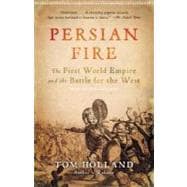
Note: Supplemental materials are not guaranteed with Rental or Used book purchases.
Purchase Benefits
What is included with this book?
tom holland gained the top degree at Cambridge before earning his Ph.D. at Oxford. An accomplished radio personality in Britain, he has written a highly acclaimed series of adaptations for Radio 4 of Herodotus’s Histories, Virgil’s Aeneid, and Homer’s The Iliad and The Odyssey. He is the author of the critically acclaimed history of the fall of the Roman Republic, Rubicon, and the novels The Bone Hunter, Slave of My Thirst, and Lord of the Dead.
The New copy of this book will include any supplemental materials advertised. Please check the title of the book to determine if it should include any access cards, study guides, lab manuals, CDs, etc.
The Used, Rental and eBook copies of this book are not guaranteed to include any supplemental materials. Typically, only the book itself is included. This is true even if the title states it includes any access cards, study guides, lab manuals, CDs, etc.
Excerpted from Persian Fire: The First World Empire and the Battle for the West by Tom Holland
All rights reserved by the original copyright owners. Excerpts are provided for display purposes only and may not be reproduced, reprinted or distributed without the written permission of the publisher.